The experience your people have at work is largely down to how effective your leaders are. The adage that people don’t leave jobs, they leave managers, is backed by our research.
As the champion for their employees, managers help people understand the connection from their work to the company’s strategy, build connections to others in the organisation, and recent data also suggests impacts directly on employee belonging.
– Lindsay Johnson, XM Scientist, Qualtrics
Unfortunately, many managers feel ill-equipped to be truly successful in their role. And as one of the most powerful pieces of the EX puzzle – and because they’re employees themselves – people leaders need HR’s support to enable and equip managers to lead and influence.
In our guide, we’ll explore how to manage employees in difficult circumstances, provide motivation, and the importance of listening and taking appropriate action.
Free eBook: Your Guide to Talent Development using 360 Feedback
What are the benefits of highly effective managers?
Employee management and their employee experience (EX) within your company can directly relate to retention levels and the success of your business:
- Improved employee performance: SHRM research shows that most employees that are engaged in their work are more likely to help the company achieve its goals.
- Lower attrition rate: According to the Oxford Handbook of Positive Psychology at Work, engaging employees means 87% are less likely to leave their organisation, meaning reduced turnover costs to the company. To replace skilled employees, management needs to recruit new staff, train them, and wait for them to ramp up to full productivity.
- Increased revenue: According to Gallup, high team and employee engagement contribute to 21% greater profitability. Motivated employees who score in the top 20% in engagement are linked to a 41% reduction in absenteeism and 59% less attrition.
- A better customer experience: The same Gallup study found that high employee engagement contributes to a 10% increase in customer ratings and a 20% increase in sales.
Losing hardworking employees can be a blow to the organisation’s productivity, morale, and finances. The success of a business that relies on the productivity of its employees can be in danger if these employees leave with their knowledge or are poached by competitors.
What is meant by employee management?
When we say employee management, we mean how leaders enable employees to do their best within the company. This year, we developed and validated a more modern view of employee experience.
Our in-house team of organisational psychologists has identified 5 key KPIs to measure EX:
- Experience: The relationship and support from the manager
- Intent to Stay: The company culture that attracts people to stay
- Engagement: How engaged the employees find their roles
- Inclusion: How involved and included they felt in their teams
- Well-being: How does the company encourage employees to focus on their health
And there are 25 drivers that influence them, which come together as a framework called EX25, an industry-leading holistic approach to measuring and optimising employee experience:
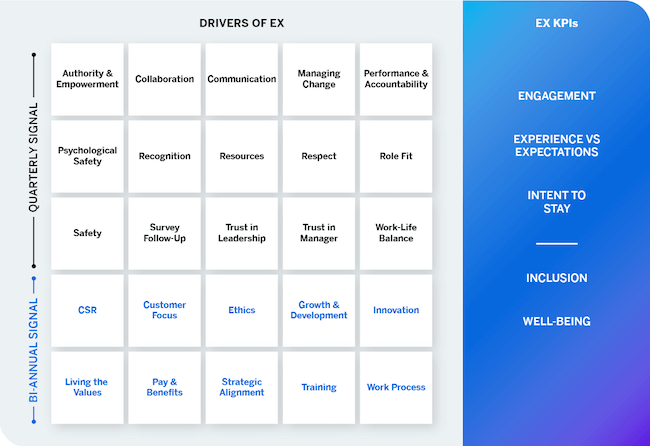
With EX25, management can holistically understand employee experience and where to focus and lead employees in order to drive impact.
How do you engage and motivate employees?
Our research in workplace belonging found only 20% of employees engaged feel they don’t belong, compared to many employees (91%) that aren’t engaged. With this knowledge, how can you engage and motivate employees?
Employee management can be made easier by empowering, inspiring, and enabling employees in their work. The “Employee Experience Index” created by Forrester Research includes three crucial employee experience pillars:
- Empower – autonomy, opportunities to advance, clarity about how one’s work contributes to company success, praise from good managers, role clarity, and a good physical environment for being productive
- Inspire – senior management who live the company’s values, belief in the core mission and values of the company, ability to provide feedback to management, belief that the company is forward-looking and innovative, belief that the company helps employees live its values, and belief that the company operates ethically
- Enable – belief that IT helps employees be productive, sufficient training on technology, technology that helps employees work on what’s important, technology that facilitates collaboration, easy access to information, and a belief that employees have the right technology and equipment.
Take the next steps in fostering belonging and bravery at your organisation
How do you create an environment that motivates employees?
Employee experience goes beyond management motivating employees within a particular moment. There are other areas that can make an impact and should be considered as part of employee management across the employee life-cycle:
- Create a culture of belonging: Our research in workplace belonging found only 20% of employees who feel they don’t belong are engaged, compared to a larger proportion of 91% that aren’t engaged.
Providing channels for employee feedback can allow employees to share their views and give actionable feedback to managers on their management style, management skills, and performance management.
Think about what makes your employees unique and provide employees with ways you can celebrate and support those differences – Are there a lot of parents and do they need more flexibility? Do your employees observe religious days that aren’t recognised or appreciated in the business, which could be acknowledged?
- Improve the hiring process: To create a diverse and multicultural company, you need to hire for experience and differences in backgrounds. The hiring process is the place future employees judge their experience, based on how inviting and positive the interview and onboarding is.
Spend time considering what activities or support can be provided to new employees – a buddy system, a retention bonus, morale events, employee mentoring programs for example – to provide a positive and nurturing first impression.
- Training on how to motivate employees can make a better manager: Great managers can instruct people on how to get there and the tasks this requires, and inspire their employees with motivation to want to achieve the same goal.
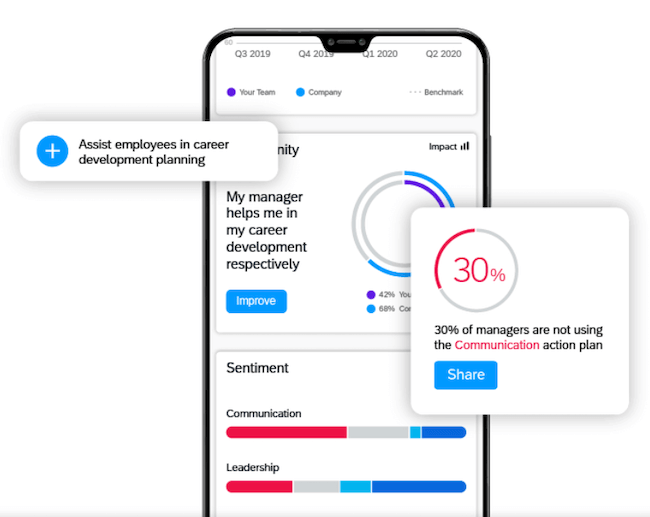
Accepting upwards manager feedback and understanding the purpose of this can help encourage accountability. Management can see this as an opportunity to create action plans and follow up with employees. (Accountability goes both ways – employees can be empowered to take stock and impact their own engagement and satisfaction levels.)
Managing employees in tough situations
There are many specific cases where employee management can be more difficult than normal. These examples warrant exploring what makes this a key problem and how to address the challenge:
Alienated employees
Driving towards creating a better inclusive employee experience will have real positive effects on the employee experience levels. If a manager can create a greater sense of belonging, inclusion, and diversity in the organisation, our 2022 Employee Experience Trends report found that this can lead to a greater likelihood of higher Intent to Stay (ITS):
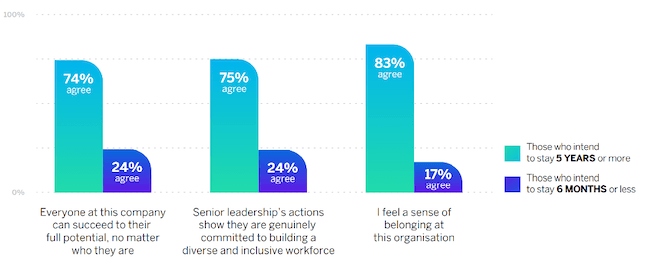
Intent to Stay is a measure of overall organisational commitment and has been linked to actual turnover. With increased ITS levels, this can help management predict turnover, allowing for action taking and planning ahead.
“When managers support their employees and listen, as well as act on their feedback, engagement is strong. Even in times of organisational disruption.” – Vanessa Kowollik, XM Scientist, Qualtrics
Ways you can do this include:
- Create team experiences regularly that are fun and inclusive: Management can promote team bonding with fun activities that are open and accessible to all.
Drinking may not be suitable for all, so an activity-based gathering, like a quiz, could help remind employees that work is fun and collaborative as well.
- Allow for informal opportunities to connect: Encourage sharing mobile phone numbers in case the team members want to connect or talk over the phone.
- Encourage positive feedback amongst peers for work and attitude: Research shows that employee performance is better if there is shared positive comments and feedback:
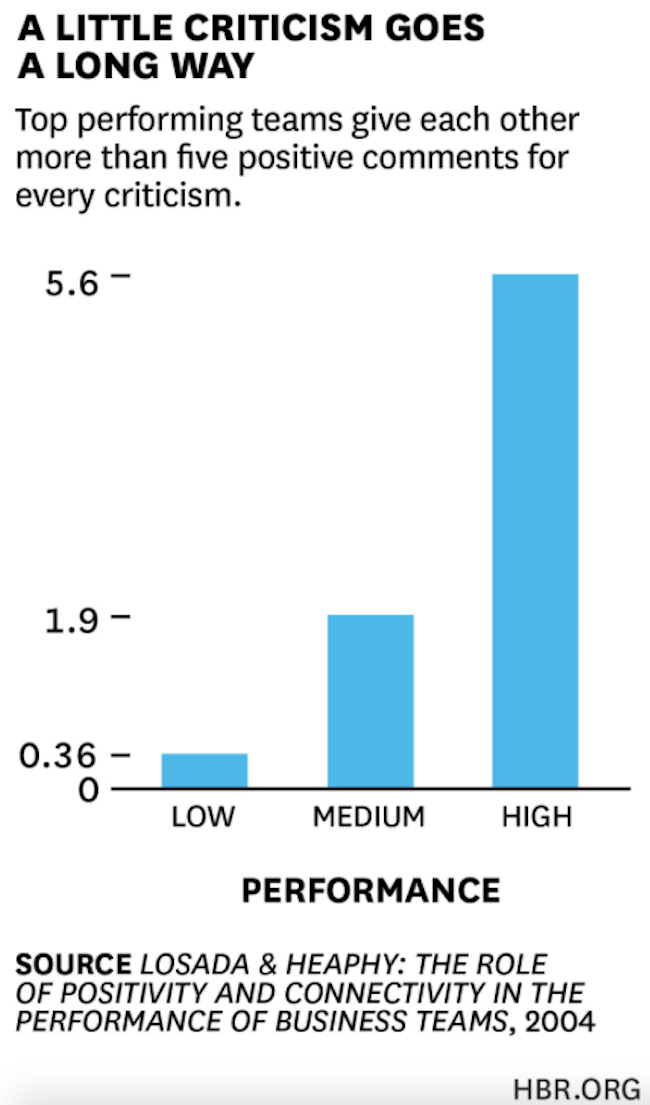
Employee burnout in high-pressured jobs
Valuing employees in a workplace culture that allows for self-care and recovery is helpful for morale levels. Even today, despite organisations implementing well-being benefits and policies, employees are still unable to or afraid to take time for their own health:
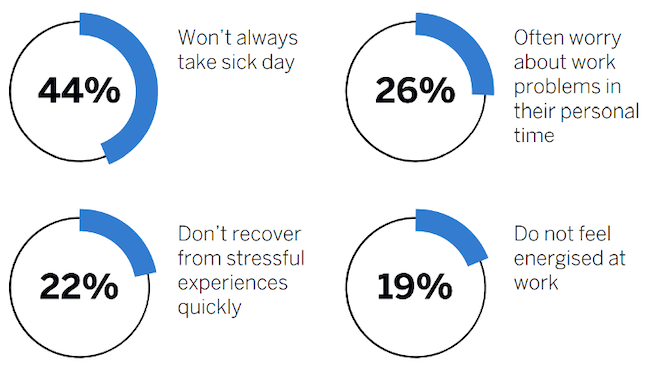
Fundamental changes in the workplace, driven by management, can help employees accept and adopt healthier practices that enable them to help themselves.
These can include:
- Respecting work time and non-work time: Create boundaries to identify when work can be done and when there is time off. Normalise time-off requesting and time for medical appointments.
Also, respect when employees take time off by not messaging them, and encouraging no work on weekends or after hours respects the employee’s rest time.
- Be a good example of the right behaviour: You can demonstrate the right actions to take and how to prioritise time, by raising awareness of the need for good self-care and taking time off when needed.
Managing remote teams
Remote teams are spread over different time zones and locations, which raises issues about connecting authentically through technology. This could be because the distribution of skills is located in different locations, or because people are prevented from meeting (they may be in a ‘lockdown’ because of the pandemic).
There are some benefits to remote working like increased flexibility of their schedules, less time commuting during peak hours, and being able to control their environment (light, heat, and noise).
Workers who have control over their schedules report finding time to exercise more, eat better, and have higher morale and a better outlook in general
-American Psychological Association
Yet, if your employees are working alone in their location, they may feel isolated or alienated from the larger group. This can impact mental health and there can be a blurred boundary of what is home and what is work.
There are some things you can do for employee management in this situation:
1.Ensure that the technology you are using to work together is working correctly: If you expect employees to work together and foster open communication, having an integrated system where everything is connected and visible can help.
There also needs to be suitable at-home environments for employees to conduct work with ease and comfort.
2.When you give tasks and projects, ensure you have been very clear with the instructions: There’s nothing worse for creating frustration than an unclear plan. If your employees are guessing what they have to do, their outputs may not be useful.
This is a waste of time and energy, which could be prevented by a simple Q&A before work begins. It also has been proven to reduce employee anxiety levels:
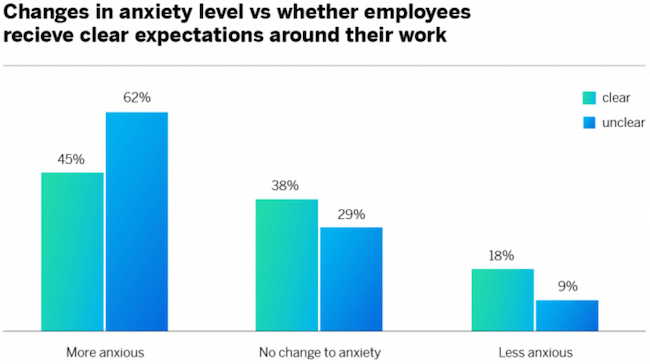
3.Check in with your team regularly to understand how they feel: You can support them by setting aside time to talk via 1:1s, about how they’re doing and what they need to feel more in control and connected to the group.
4.Carry out the support and be consistent, aiming for routine and regularity: Once you know how you can support your team, carry it out and do it well. If you are great at supporting the employees one day and you are absent the next time you’re needed, this can undo your efforts.
Maintaining regular support and connection is key for employees to trust your availability and reliability.
Managing difficult employees
Sometimes, you’ll find an employee is finding it difficult to adapt or comply with what’s needed to get you over the finishing line. Behaviour that is disruptive, opposing, or diverging from your plan won’t help you achieve the outcome you need, and it can also be disruptive, distracting, and demoralising to other team members who are working.
In these situations, it’s important to remember that there can be a number of reasons why an employee is being ‘difficult’.
First, it’s important to identify exactly what behaviour is not helping and establish if there is a pattern. One-off events have less impact long-term than sustained behaviour that indicates a pattern of thinking.
Our 2020 EX Global Trends study showed that 2 in 3 employees believe that it is “very important” that their employers listen to their feedback, and that a quarterly cadence has been in maintaining engagement.
Second, speak to the employee and outline the perceived behaviour and seek to understand the reasons why it is occurring. It might be that the employee isn’t aware they’re doing it. Often, this step is enough to bring up the issues that you can then evaluate and discuss to find a win-win solution.
Lastly, you may need to have a few chats to understand the root cause of a situation, but this can be valuable in the long term.
eBook Download: Understanding the Moments that Matter Most to Your Employees
How do you know if your employee experience is improving?
Do your employees feel heard? Listening to employees is crucial in being able to judge whether your actions and motivation efforts are working. Engagement rises to 61% for those whose company has a feedback program, compared to 45% for those without.
But sometimes it’s hard for management to know how to gather opinions in a fair way, and what to measure to help you learn insights. Especially as a more holistic approach is needed to understand employee management metrics (like sentiment, well-being, DEI, sense of belonging, and sense of purpose).
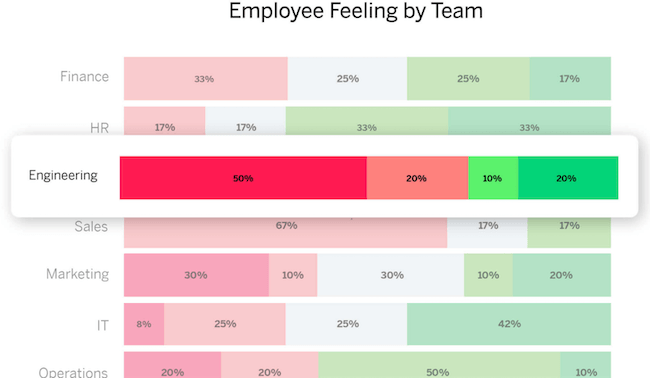
Our products are best in business for spearheading employee management, by providing smart tools that sensitively interpret employee feedback and provide actionable insights for managers to take forward.
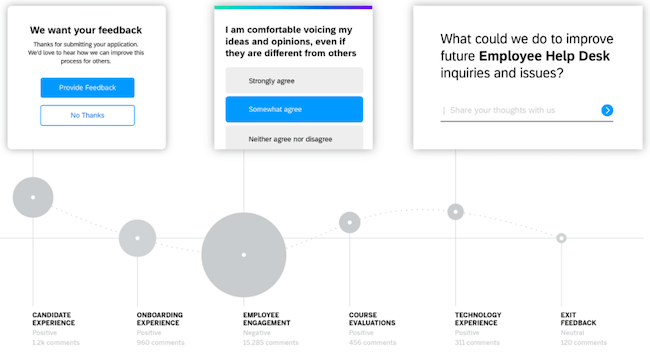
It’s critical that managers have the support and tools they need to not only listen to their people but act on feedback to improve their experiences.
This allows for the ability to listen to and acknowledge employee feedback and leverage it to form new habits that improve employee management.
Some of these ways include:
- Setting up an employee engagement program to regulate and manage the engagement with employees
- Set up annual, bi-annual, and quarterly surveys and polls to ‘listen’ to your employees. Some examples of employee management surveys are:
- Employee engagement surveys: These ask employees their opinions and sentiment on their working conditions and experience, at a single point in time.
- eNPS: This simple survey is ideal for gauging remote workforce sentiment as part of a wider employee engagement program. It asks one question: ‘On a scale from 0-10, how likely are you to recommend our brand/company to a friend or colleague?’
- Pulse surveys: These surveys are frequent and quick, so they are useful to do to understand feedback about specific activities or projects.
- 360 surveys: These surveys are great to engage remote workers, providing the chance for employees to give and receive feedback from their manager, peers, and themselves.
- Measure the right metrics and interpret these easily using real-time reporting and bespoke analytic reports
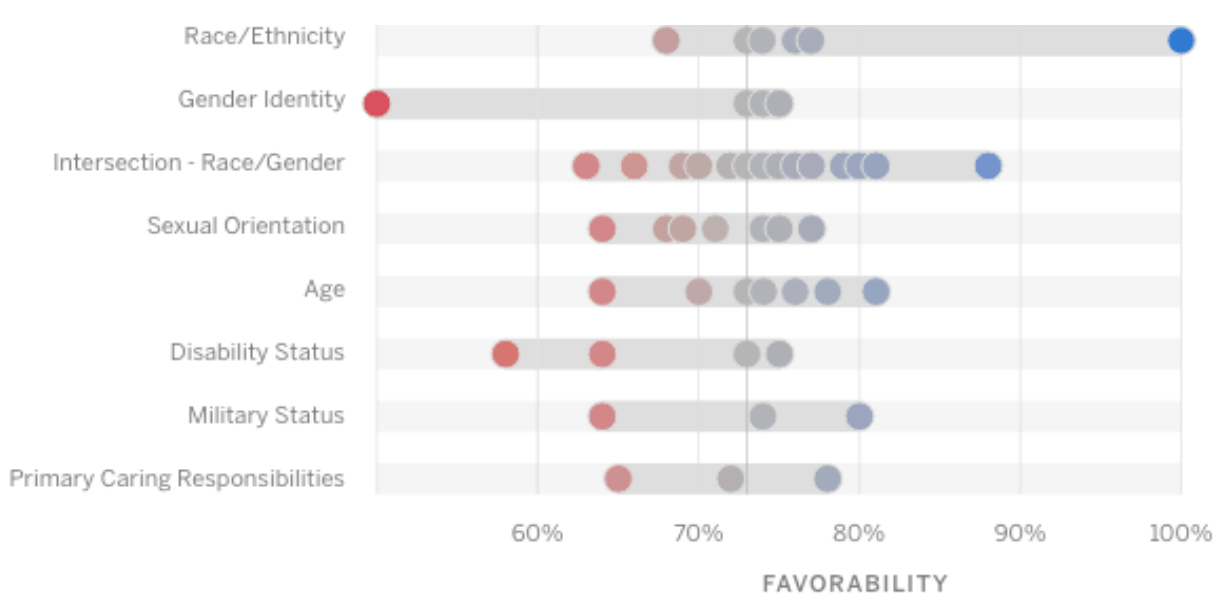
- Action these in an intelligent and customisable workflow that automatically alerts the right managers and triggers actions in each linked department
As a real-life example of employee management, we recommend you read about Bright Horizons. They were able to make an experience program that allowed them to collect feedback throughout the employee lifecycle, including onboarding, annual surveys, and quarterly pulse checks. The real-time feedback was cleanly visualised and routed to managers so they can take immediate action.
Speak to us about how we can help you with setting up your employee experience program.
If you’d like to learn more about employee management, our third annual Employee Experience Trends report 2022 is free to download.
This surveys nearly 600 employees in the UK to pinpoint exactly why leaving has never felt more appealing and what you can do in 2022 to get them to stay:
Stay up to date with our 2022 Employee Experience Trends report